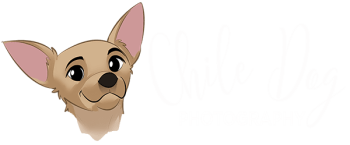Today I’m posting about my most recent experiment, creating layered paintings using Photoshop clipping masks. I need a framed print for the Professional Photographers of San Diego County (PPSDC.com) annual Holiday Party on Monday. Fellow PPSDC member, Cindie Wolf, requested one of my rescued pitbulls. So, I decided to play with layers and clipping masks to see if I could imitate Woody Walters’ painting style. After all, Pablo Piccasso once said, “Good artists copy, great artists steal.” This white pitbull at the Bryan Animal Center was named “Spuds MacKenzie.” I decided to use a Christmas color palette since ’tis the Season. I’m probably letting the “cat out of the bag,” but I thought my friends might like to see what I did.
Photoshop Brushes
I did a quick Google search for “powder photoshop brushes” and rediscovered the phenomenal resources at Brusheezy.com. Not only are there 18 sets of free powder brushes for Photoshop, but there are lots of collections of brushes for Fog, Dust, Snow, Fire, Smoke, Watercolors, Lightning and Lens Flares. A few of the collections are corrupted so they won’t unzip properly, but there are so many that it doesn’t really matter that much. They are also very large brushes, so they will slow things down.
Photoshop Select and Mask Taskspace
I only played with a few of the powder and disintegration Photoshop bushes to make these two images. The confusing thing about Photoshop clipping masks is that they need to be BELOW the image layer you are masking. I usually mask my subjects using the “Quick Select” and “Refine Mask” tools in Photoshop. Many people adore Topaz Remask, but I find that for me Photoshop does a better job on fine hairs, so I’ve stuck with it. Photoshop made a significant change to Quick Select and Refine Mask as of Photoshop15.5. There was much gnashing of teeth, but Julianne Kost posted about how the new “Select and Mask Taskspace” works. Worth a view, and it’s really quite slick once you get used to it. I especially like the “onion-skin” mode.
Photoshop Clipping Masks
Normally, I always save the mask as a “new layer with layer mask.” For these paintings, I “apply” the refined mask to the image just to keep things clean and simple (Layer = “Masked Subject”). Then I just make a layer “Clipping Mask” UNDERNEATH my subject layer and use the Photoshop powder brushes to create my “mask.” It doesn’t matter if you use black, white or a color for this layer because Photoshop only sees the DENSITY of each pixel. 100% density results in the subject layer showing through. Painting with black generally gives you something that’s easier to see in the thumbnail view. Once you’ve got your inverted “opening” looking the way you want it, go back to your subject layer and turn it into a clipping mask either through the layers menu or by hitting option-command-G (on a Mac). You should see a little right-angled arrow show up right next to your subject’s thumbnail. Hit option-command-G again to undo the clipping mask.
In the future, I may want to run the key lines under the powder where they cross, right now I’m pretty happy with it. I have never used paths for stroking key lines, so that’s something I learned from Woody and Ninya Walters. I might just have to do a series of these images for a fundraising calendar for San Diego County Animal Services next year :). Now I’ll have to play with low key versions of this technique. Not a whole lot of time for this since hanging out my digital shingle at Blue Sky Digital Strategy :).
Now go have fun with Photoshop Clipping Masks!! And let me know if you found this helpful.




